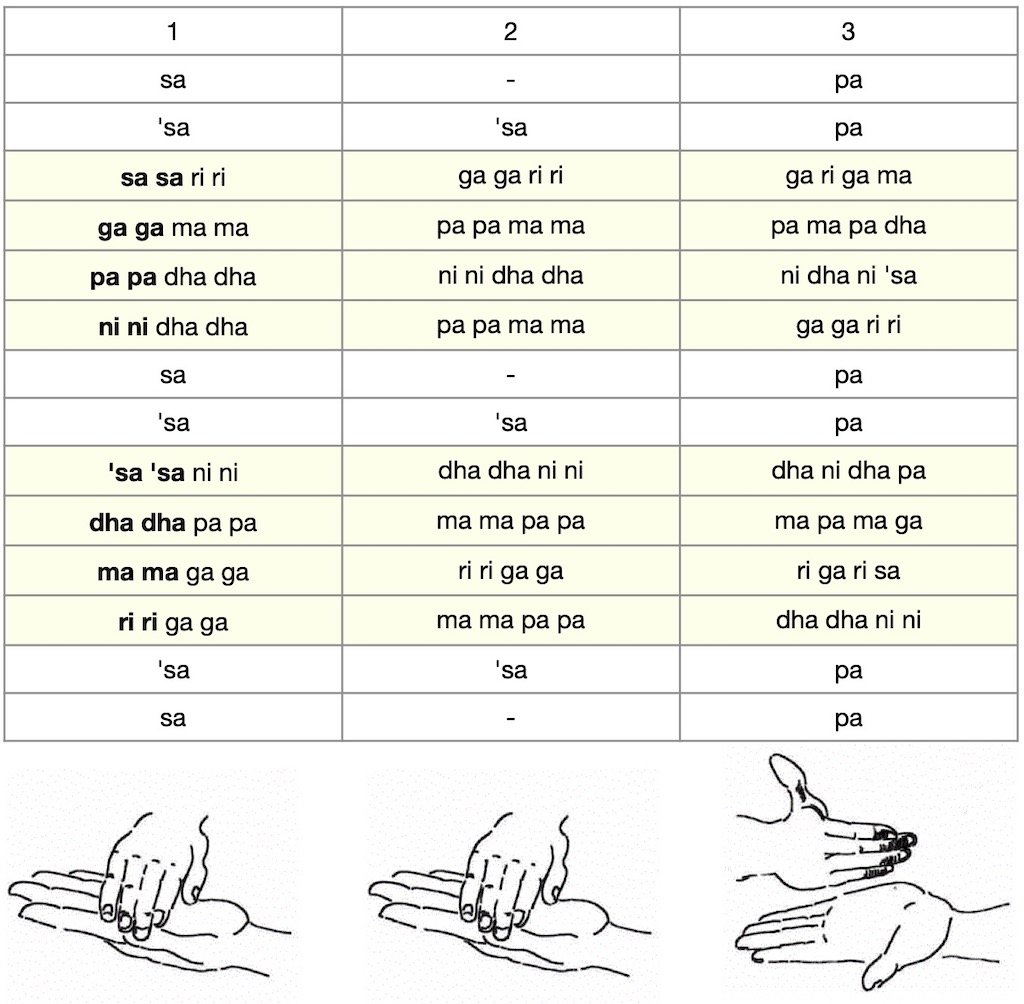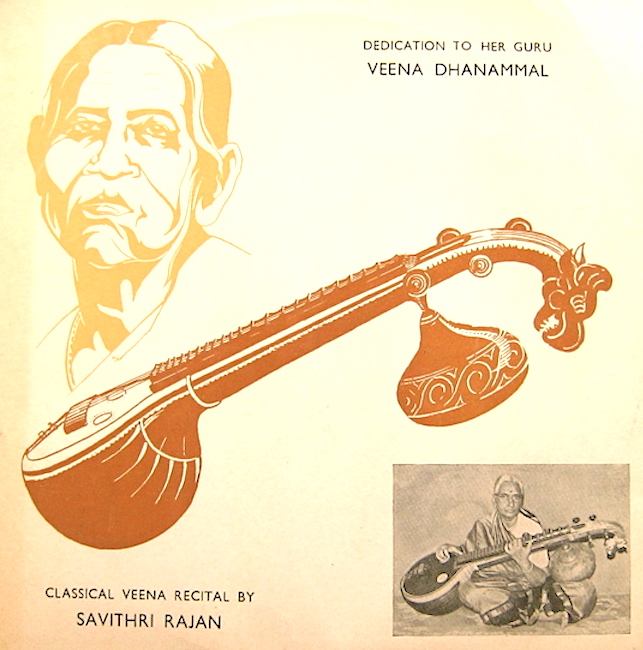
“Flow” exercises
A series of “Flow” exercises invites learners to practice all the 72 musical scales of Carnatic music (“mela” or mēlakarta rāga). It is meant to supplement the comprehensive standard syllabus (abhyāsa gānam) attributed to 16th c. composer Purandara Dasa.
Repeated practice need not be tedious; instead it instantly turns joyful whenever we remind ourselves that Indian music “is created only when life is attuned to a single tune and a single time beat. Music is born only where the strings of the heart are not out of tune.” – Mahatma Gandhi on his love for music >>
As regards “time beat” in Carnatic music, the key concept is known as kāla pramānam: the right tempo which, once chosen, remains even (until the piece is concluded). | Learn more >>
Music teachers will find it easy to create their own versions: exercises that make such practice more enjoyable. | Janta variations >>
Concept & images © Ludwig Pesch | Feel free to share in accordance with the
Creative Commons Attribution-NonCommercial-ShareAlike license >>
Rūpaka tāla (3 counts/syllables)
Lesson 4: “ta ki ta“- trikāla = 3 speeds
Full lesson: Practice four widely used Carnatic talas >>
Listen & learn more
Listen to a rendition by Meera Seshadri in Rupaka tala (tala starting from 1:18): Bhupala Gitam (5 notes) >>
Vocalists and instrumentalists practice pairs of notes (janta svara) with the aim of increasing fluency and precision. Listen to a brief lesson by Savithri Rajan teaching janta phrases in raga Navaroj >>
Janta phrases are embedded in many compositions heard in today’s concerts (notably varnam, kriti and tillana) and as part of improvised interludes (manodharma sangīta): kalpana svara and tanam as clearly heard in the following examples:

Intacalamu (varnam) – Begada – Adi
Tanam – Ghanaraga panchakam (order: Nata, Gaula, Arabhi, Sri, Varali)
Once familiar with the pattern consider practicing the first and the last melakarta ragas (mela 01 & mela 72).
Then proceed to others that are better known as “parental ragas” for their popular “offspring” (janya “derived ragas”) – notably those associated with melas 02 (Revati & Srimani), 17 (Saurashtram), 36 (Gambhiranata), 39 (Varali), 44 (Bhavani), 53 (Hamsanandi & Purvikalyani), 59 (Ranjani), 61 (Srutiranjani), or 66 (Amritavarshini).
Note: some of these mela-janya associations have been submitted to an expert commission appointed by the Music Academy Madras in view of some ambiguity or other. On similar lines, the “omission” of one or more notes from a raga’s “parental scale” may be confusing to learners as in the case of pentatonic (audava raga) Gambhiranata – today listed under mela 36 – which might as well be listed under mela 29.
“Whether the janya is the one derived from the melakarta or vice versa, the existing janaka-janya system of raga classification enhances the paramount importance of the 72 melas as technical facts defining the janyas under them.” – S. Seetha in Tanjore as a Seat of Music >>
a = middle octave (madhya sthayi)
‘sa = higher octave (tara sthayi)
Download this audio file (2 MB, 2 min. mono)
Credit: eSWAR / FS-3C Sruthi petti + Tanjore Tambura
South Indian conventions (raga names & svara notation): karnATik.com | Guide >>
The above svara pattern may be sung, hummed or practiced silently with any svara variants: those you are already familiar with (e.g. raga Mayamalavagaula, mela 15, raga Dhirasankarabharanam, mela 29, raga Mecakalyani, mela 65) or any other you want to practice.
Enjoy practicing by way of gradually getting into a state of flow: deep concentration while feeling completely absorbed by an activity.
